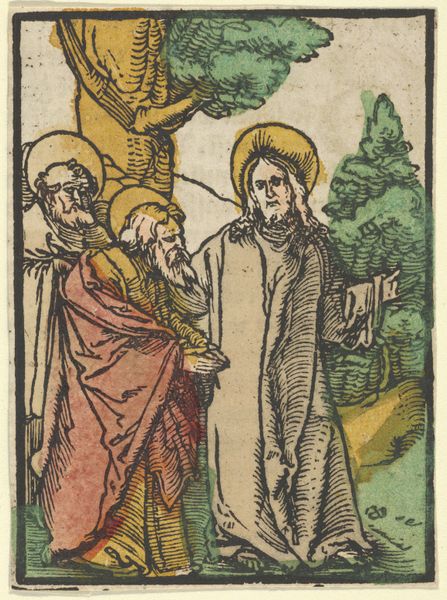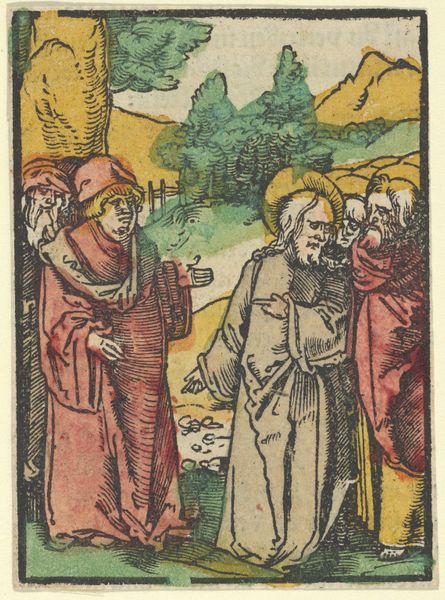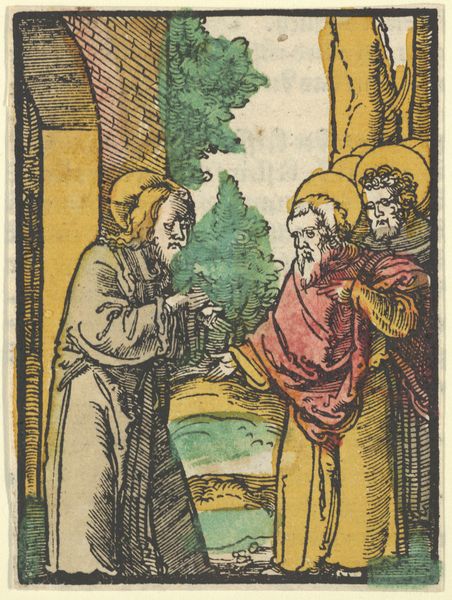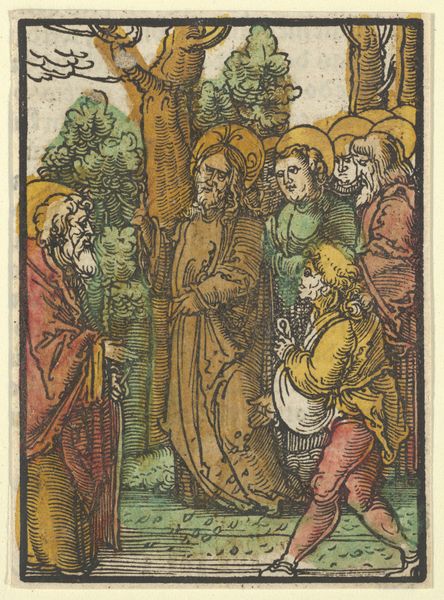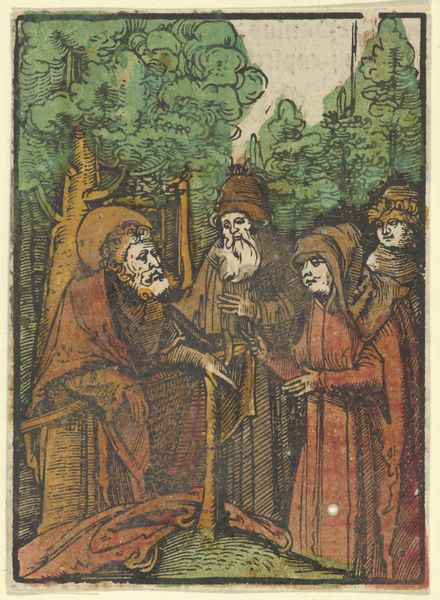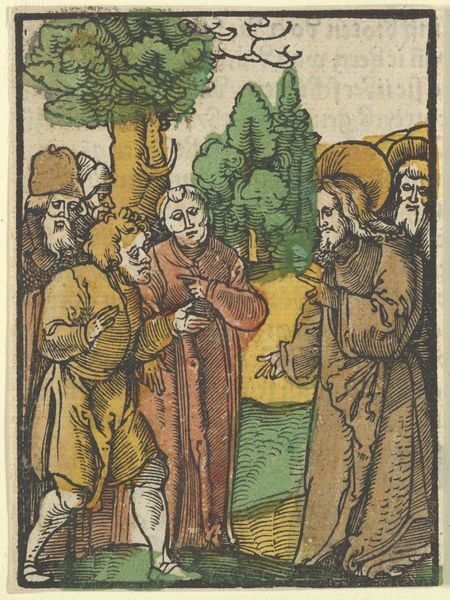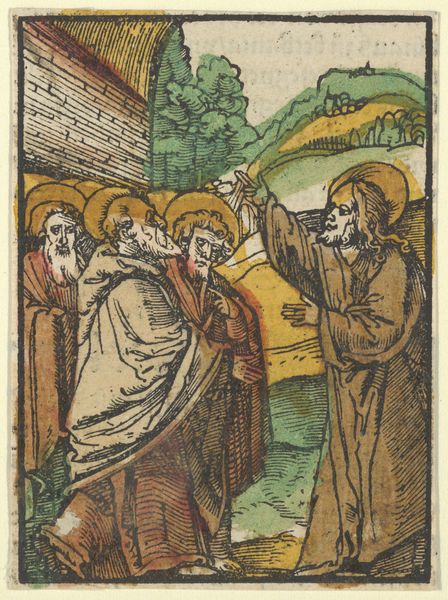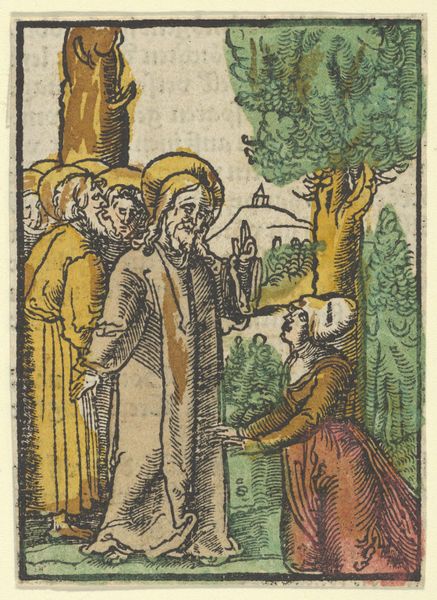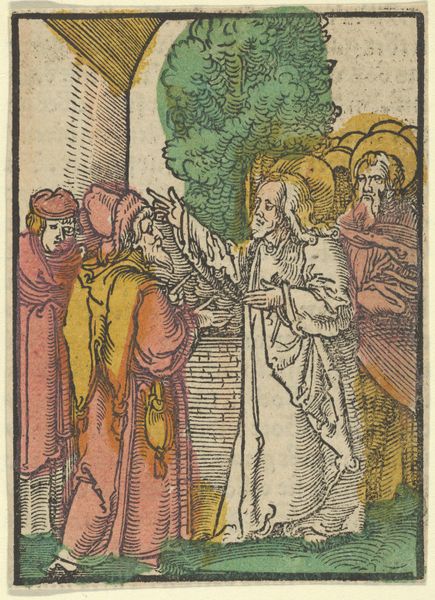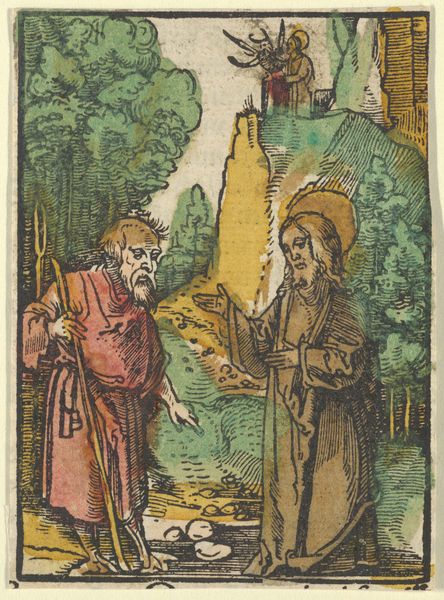
Christ Teaching the Disciples, 1, from Das Plenarium 1517
0:00
0:00
drawing, print, woodcut
#
drawing
# print
#
figuration
#
coloured pencil
#
woodcut
#
history-painting
#
northern-renaissance
#
watercolor
Dimensions: Sheet: 3 11/16 × 2 11/16 in. (9.4 × 6.8 cm)
Copyright: Public Domain
Curator: Isn't it peculiar how historical narratives, when filtered through art, can feel both distant and deeply present? Editor: Absolutely. Looking at this small woodcut from 1517, "Christ Teaching the Disciples, 1, from Das Plenarium," made by Hans Schäufelein, the first thing that strikes me is this immediate contrast: Christ, centered, calm amid this agitated figure, seemingly pleading at the left. Curator: Agitated is one word for it! He’s got a real "woe is me" vibe, hasn't he? But more broadly, Schäufelein, through this printed image, democratized biblical narratives for the early 16th century— made theology accessible in the vernacular! Editor: Accessible, sure, but the emotional impact must have been huge for people who hadn’t ever had access to scripture on such a wide scale. You can almost feel the earnestness. There’s something very immediate about the rough lines, the almost childlike quality of the colors. What can you tell us about the social role of prints like these at the time? Curator: They acted as conduits, amplifying reformist sentiments and serving as mnemonic devices. Think about it— literacy was still a privilege, but imagery transcends those barriers. This wasn’t just decoration; it was dissemination! It reinforced a certain pious relationship. The way, in this piece, the artist's employed these heavy, shadowed figures, it gives a strong impression on our modern senses, almost evoking empathy for its medieval audience. Editor: Yes, exactly! These aren't distant saints but living presences. How radically that departs from a static relationship of faith, or religious identity. But this personal interaction in visual form-- did that worry any powers that be, religious or otherwise? Curator: Undoubtedly. Visual imagery has always been a potent force for control. However, as this artwork testifies, artistic expression could also carve a space for shared identity, shaping spiritual culture within specific locales, offering new ideas regarding faith and what it represented for one's life. Editor: Well, whatever the powers that be felt at the time, standing here today with centuries of distance, there’s an energy to this tiny, fragile scene. It really connects to a sense of spiritual longing. Curator: Precisely! And that longing is, in many ways, eternally human.
Comments
No comments
Be the first to comment and join the conversation on the ultimate creative platform.

